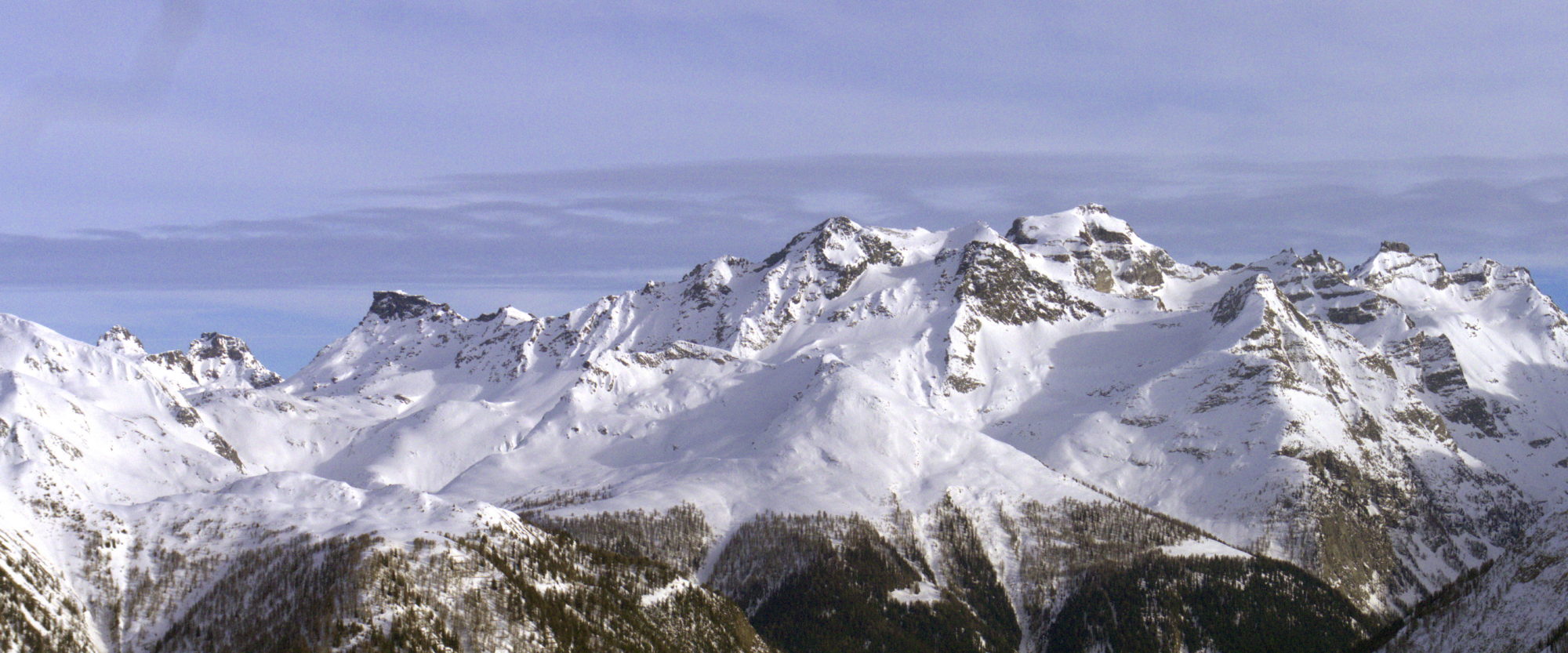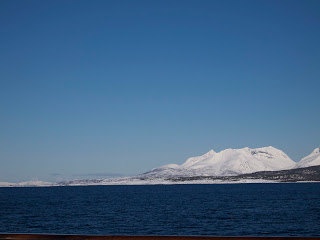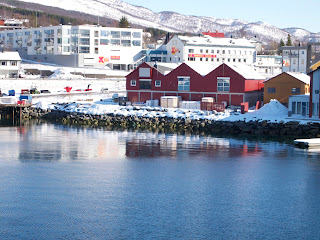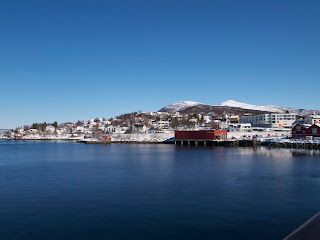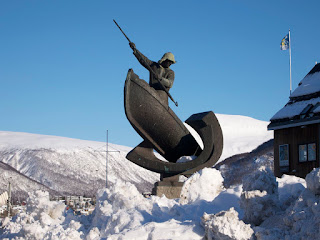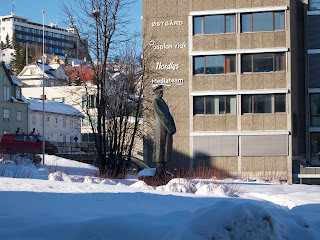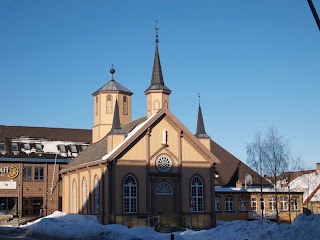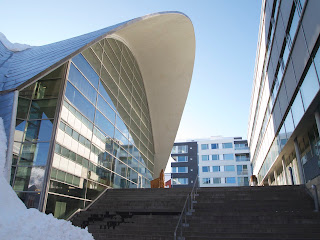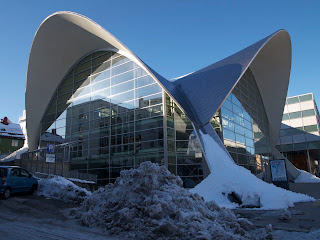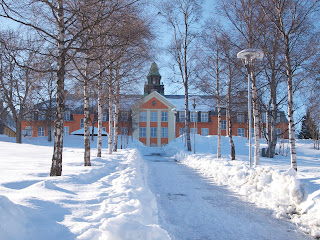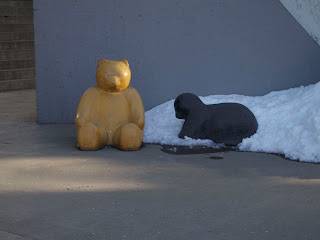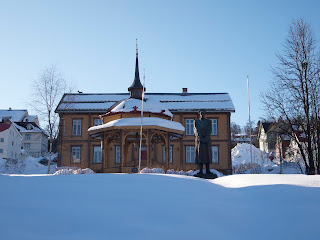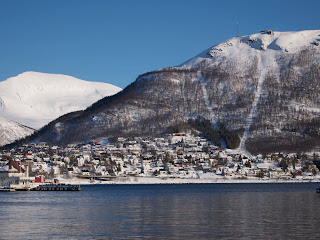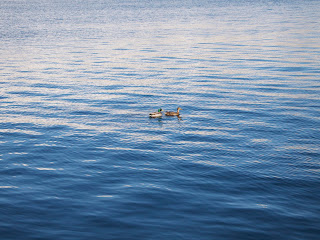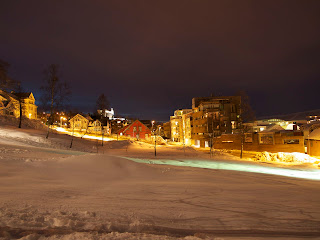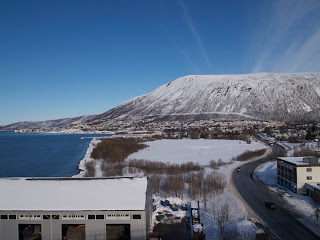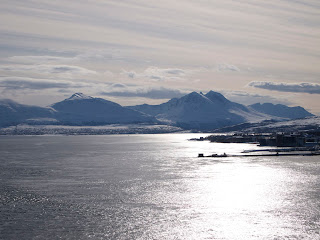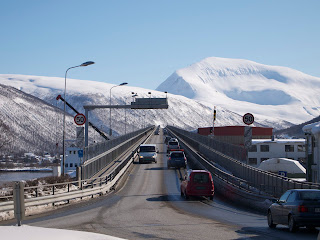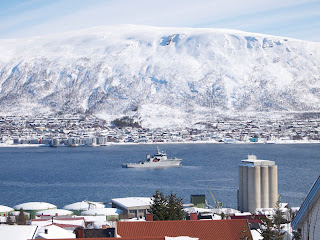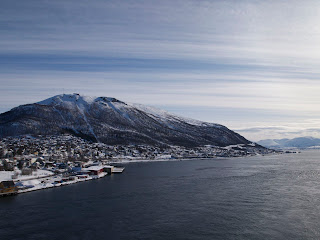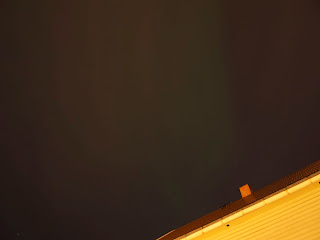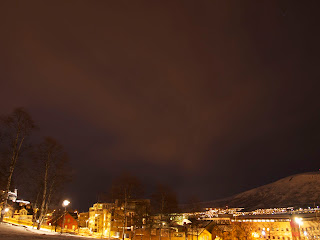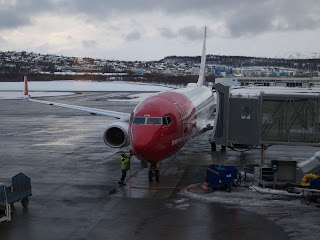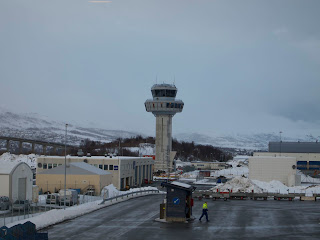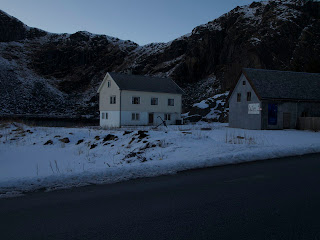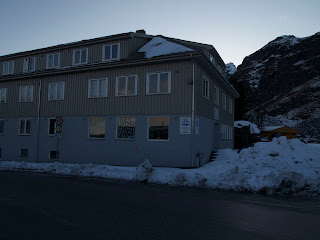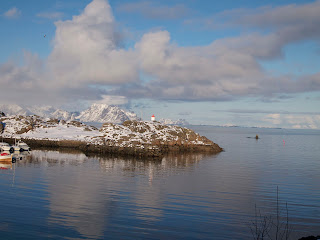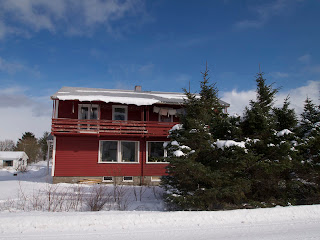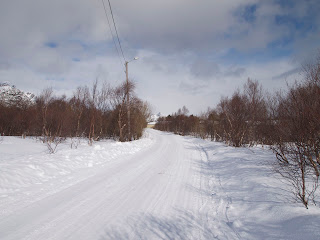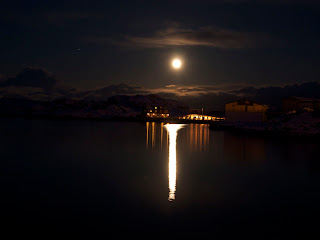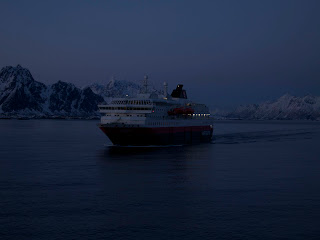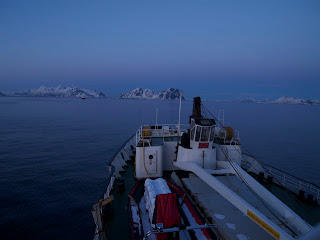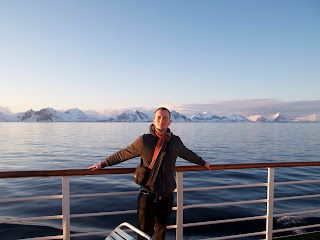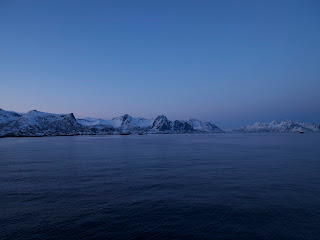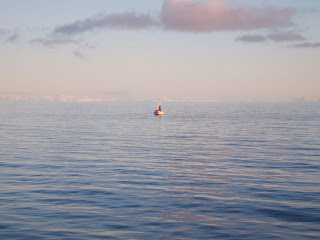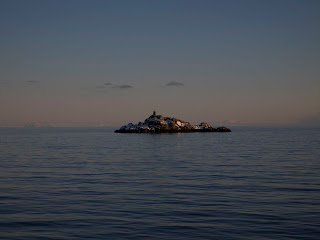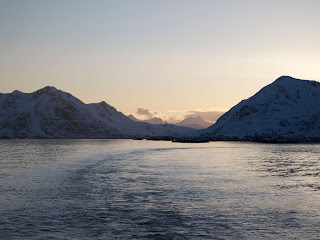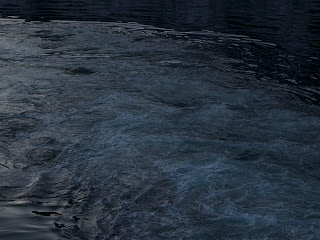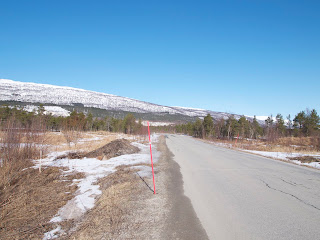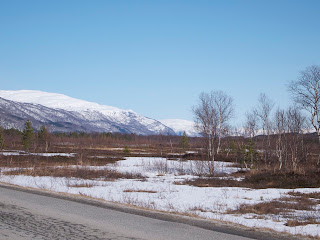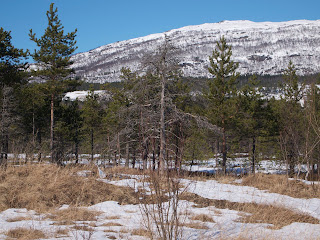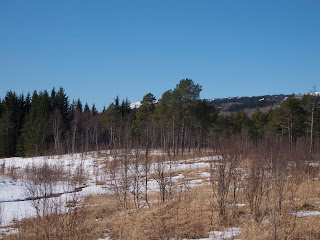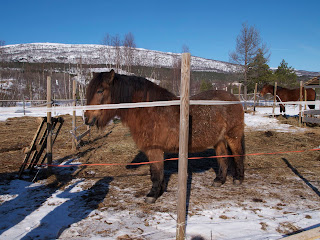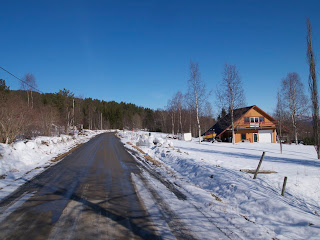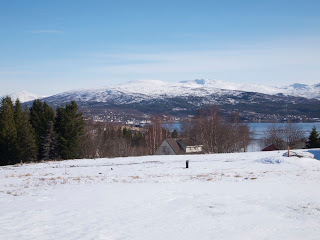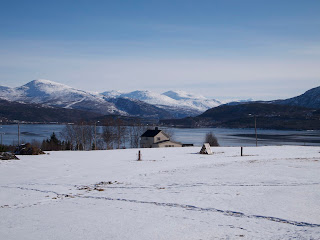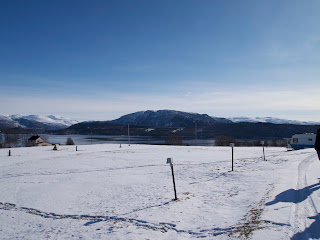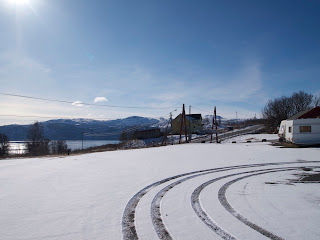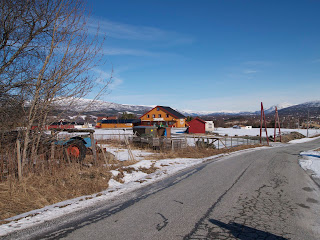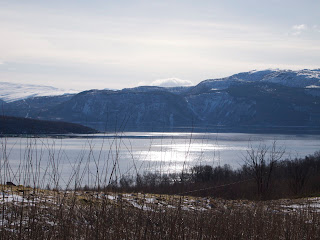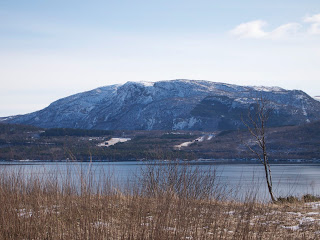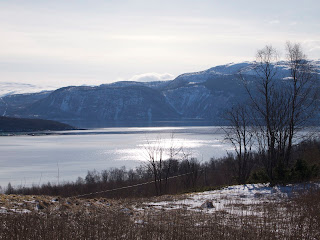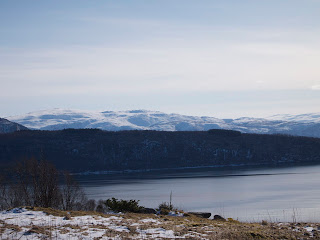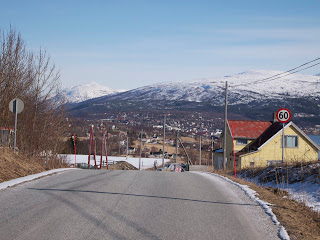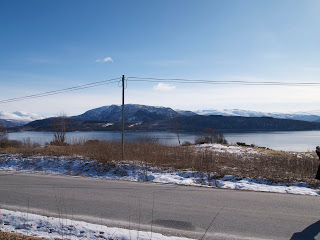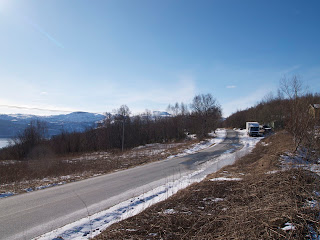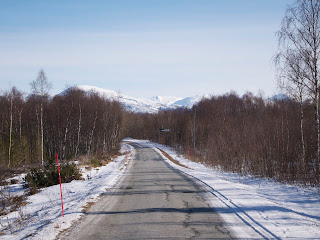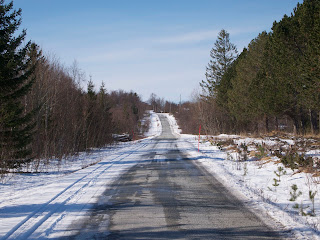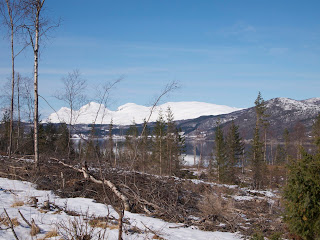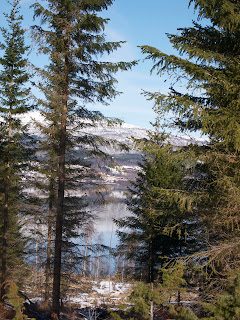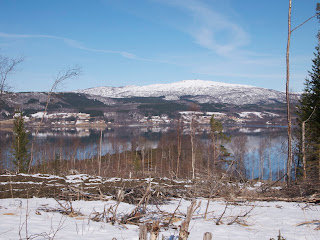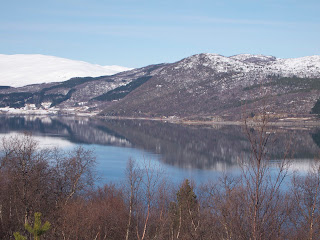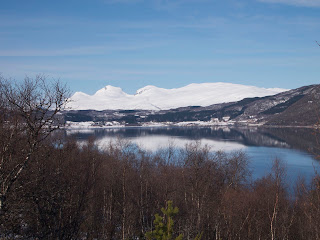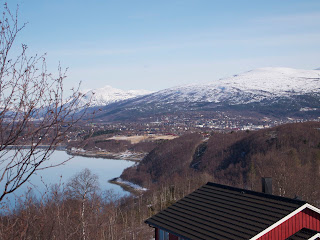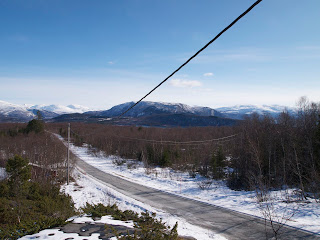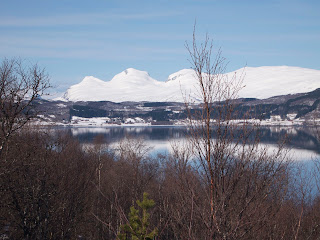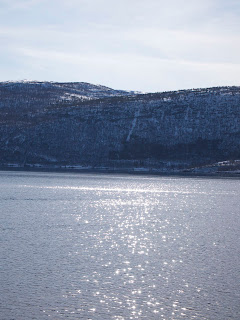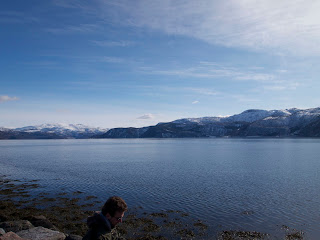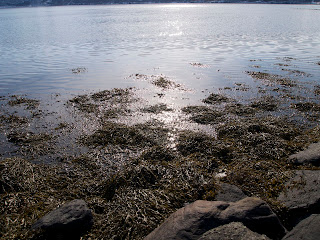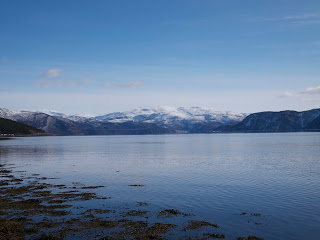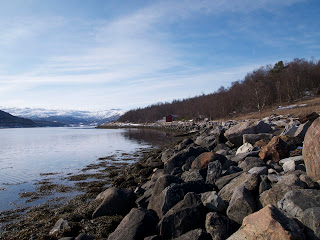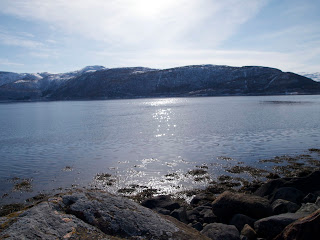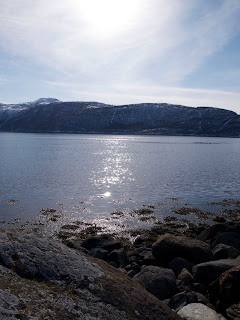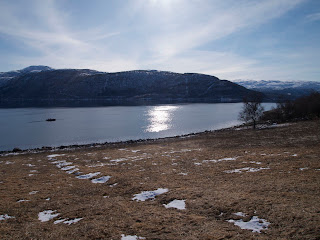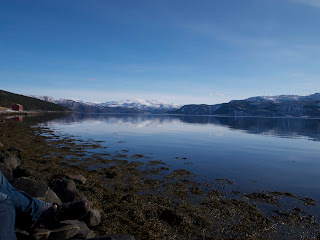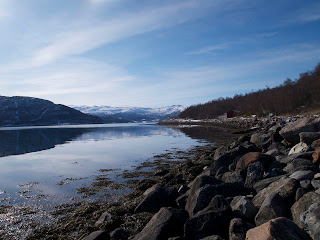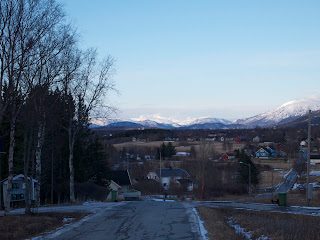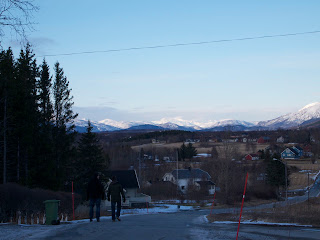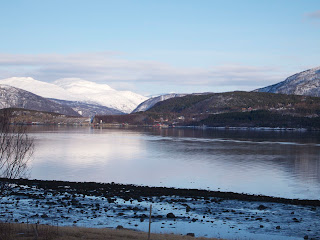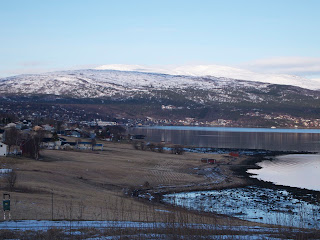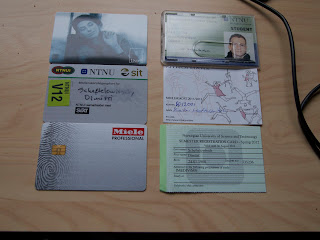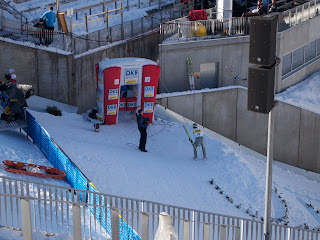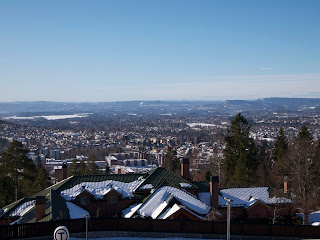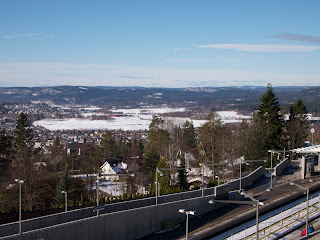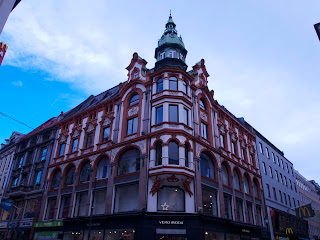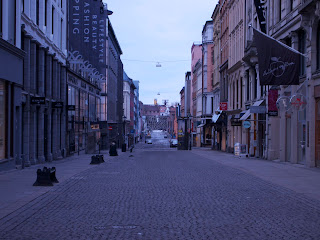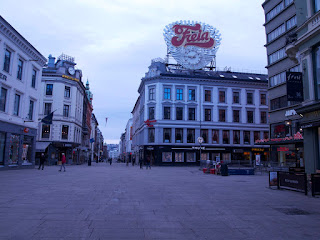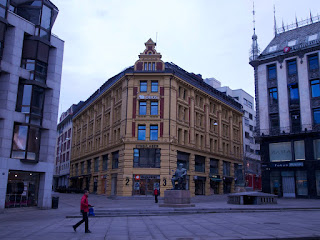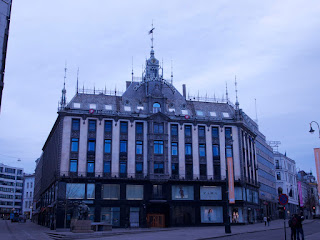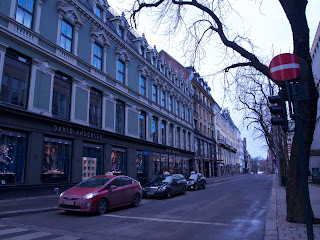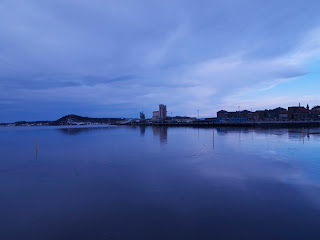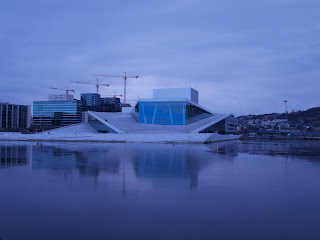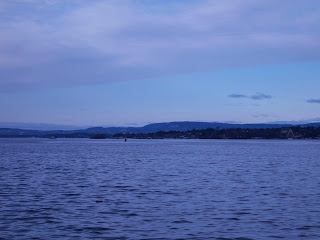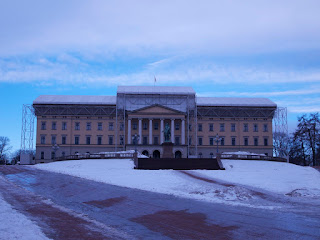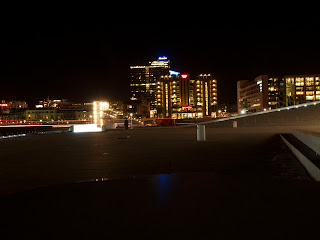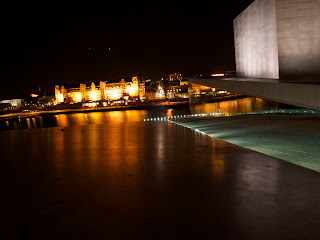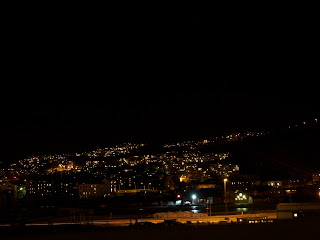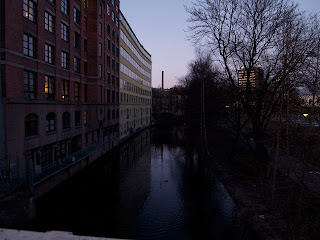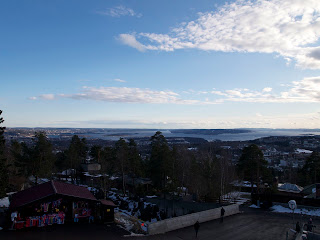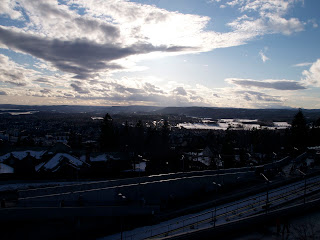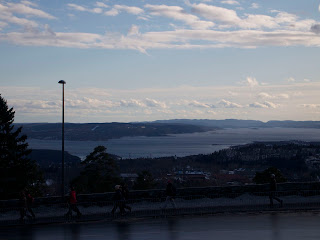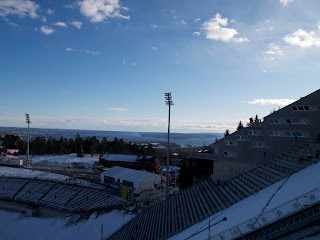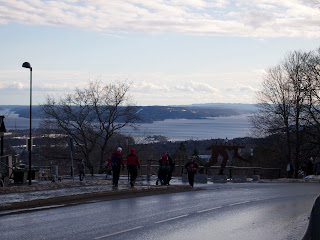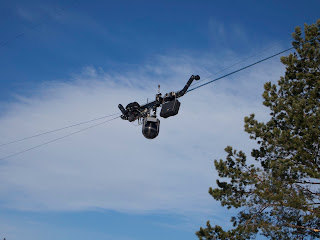(This is a post I should have written yesterday, but I did not get to it)
We left Fauske on Wednesday and traveled to the Lofoten islands. The process was smooth in the beginning: we left early in the morning and the first kilometer or so, it was okay. Then one fellow traveler slipped and broke the (unopened) vodka bottle which was the first indication that things will not go that smooth on that day. In hindsight, it has to be told that he could have broken his arm, so, the damage was really minor.
Then we went to the bus station and took the bus to Skudvik, and from there, we went by ferry to Svolvær (and, if you ever wondered: the Notwegian æ is pronounced as the a in smart). In Svolvær, we did not catch the right bus and found out that (1) the next bus is in two hours (2) the next bus will not bring us to the desired destination (3) the next bus will cost us around 200 NOK each. So we took the only reliable public transport hereabout, which is the Hurtigruten ship line and paid 160 NOK each. Yes, the big one. Yes, it says something about both the roads and the Easter traffic here.





We arrived in Stamsund in a rather cute hostel which looked like (and probably was derived from) a fisherman’s house directly in the fjord. The next four days consisted mostly of wandering around and socializing with the other people in the hostel, almost all of which were in some way or another downshifters, hipsters and French girls. As a means of relaxation from the XKCD-style long walks along the fjord, I was reading HPMoR and taking pictures of varying quality — I have to say that the weather in Stamsund was not exactly predictable and changed on a hourly basis. We managed to see some glowing aurora remnants, though.












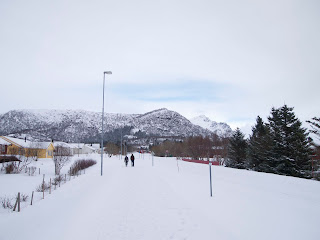


At some point we were looking at the book shelf in the hostel and were recommended a book titled “Tod in den Lofoten” (“Death on the Lofoten islands”, most probably not translated). The cover depicted a naked woman sitting on the beach, turned with the back to the reader, which is a direct violation of stage rule number zero: Never turn your back to the audience. I tried to take the book seriously. I failed. While reading the first pages, I had the same feelings I usually get when I read the “tasty parts” of low-class fan fiction, which are some mixture of disgust (“Ew, you can’t write THAT!”) and researcher’s curiosity (“What real-life experience moved the author, a German pastor, to the conclusion that real, non-cardboard characters would act like THAT?”).




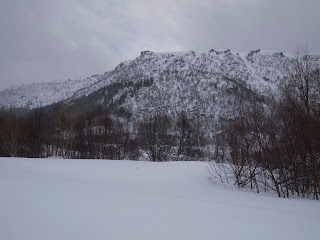
On a positive note, I must say that the Lofoten archipelago is really beautiful — in any weather. I have shot about 250 pictures of which only the very best are here (and I wand to note here: I love my tripod!). I recommend to look at these pictures while listening either to classical music (like the Ninth Symphony) or melancholic Scandinavian metal. It fits surprisingly well.
We left Stamsund on Sunday (Happy Easter!) and proceeded to Tromsø with the Hurtigruten line. The ship was very nice, but in the end, rather boring (not so if you are seasick :D), so I was mostly reading, drinking tea and making pictures of what appeared appropriate. I managed to find the limits of my camera (not too hard if you try, really): the evening-night shots are… well… see for yourself. Probably better optics can solve this problem.
